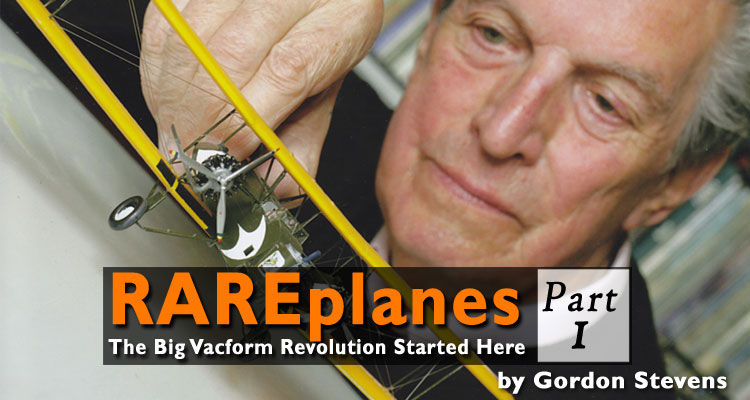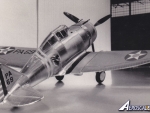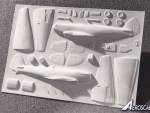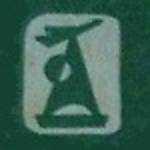RAREplanes - The Big Vacform Revolution Started Here
17
Comments
l'm rather old and ancient - the name is Gordon Stevens - aged 85 I am a newcomer to the
Internet. What has amused me whilst surfing the many modelling chat lines is the occasional
heated debate about the merits (or not) of vacuum-formed model aircraft kits. It seems they are
now looked on as dusty dinosaurs from another age, indeed many thousands were produced in
the last 30 years of the 20th century by a veritable hoard of amateur modelmakers from places as
diverse as Gt. Britain, USA and Russia by way of Germany and Japan. Maybe that sounds a bit too
much like World War Two but though there was much great enterprise to sell and make money,
the market for vacforms remained healthy over that period and no brand wars ensued, so healthy
in fact that in the early 1980s almost half of the advertising in aircraft modelling magazines was
devoted to vacuum form kits. They served their purposes at the time and, apparently, are still
giving pleasure to a few talented diehards which is a comforting thought. Unfortunately, several
people never got around to making the vacforms they had bought and with a flood of short - run
injection - moulded and slick resin kits from Eastern Europe duplicating the subjects, well tough
luck, they really should have been used up years ago. Nevertheless, the history of the vacform
explosion on modelling websites seems to me rather vague (I was not a resident of Bahrain as
reported) which is not surprising since most of those who were around in the early days have now
gone to Plastic Paradise so whilst I still remain, perhaps I had better write the true story, as I was
the one who started it.
45 years ago the London IPMS (International Plastic Modelling Society) came into being and almost immediately attracted many of the top plastic modellers to its meetings at a church hall off Oxford Street. It became a showcase for the finest models and the most advanced techniques, a movement for good that rapidly spread to the rest of the civilised world. But a group of members had tried and exhausted the available range of model kits in 1:72 scale, which was currently the popular size, and wanted more of the lesser - known subjects that were not commercially attractive for big plastic kit manufacturers. We desperately needed some way to obtain cheap mouldings ¡n plastic, however rough, that could be worked up to competition standard and make them stand out from the massed lines of Spitfires and ME 109s.
Talk was of using epoxy resin, wood, rubber, plaster -of-paris and even papier-mache for moulds - anything but cutting expensive steel. My own sudden inspiration came from a box of chocolates where the moulded plastic layer tray had indentations just like model engine cowlings and wheels. But how did they do this? Being a not-technically-minded artist, it was months before I identified the process and many more months before I discovered a sympathetic plastics factory owner, Don Manser, who being an ex-Frog model toolmaker realised the potential , gave great guidance and opened his works to me.
By then I had cobbled up a wooden master pattern of my favourite fighter, the needle - nosed Curtiss XP-37, that had never been kitted before. The twin fuselage halves were positioned in a forming machine, a sheet of styrene clamped and heated over it and, at the press of a button - whooosh! - the vacform revolution was born! The crude mould lasted for just two impressions but the bumps and lumps on the heat-formed plastic sheet were enough to allow a model to be constructed that, surprisingly, did look like the sleek fighter. Bingo! All the techniques for building the vacform kit were then messily worked out on my kitchen table - and I don’t think they have been improved or changed since that Summer of 1969 (despite attracting 300 competitors and their dogs, who, all of a sudden thought - duh? - WHAT A GOOD IDEA!).
A card sleeve was rapidly designed to give the moulding an identity for display at shops or shows and to give some protection, but to find the right brand name from a list of forty different suggestions was a daunting task because an untried product could take a severe nosedive if the wrong one was chosen. I reckoned I got it right with RAREplanes, so a smartly-designed letterheading bearing that name and guaranteed to impress was printed ready for the first day of business. Right on the brink, at that point, I felt that perhaps a full kit of the pretty Seversky P-35 pursuit might make more of an impact and so the XP-37 became a fuselage conversion piece for a P-40 kit - the first RAREbit. Inevitably production costs for short runs are high and this meant that each vacform kit would be about triple the cost of an Airfix Spitfire and so, to test the elevated level of pricing (50 pence each) my IPMS friends were then offered RAREplane kits at the June 1969 meeting where they reacted quite favourably. It was also accepted that the extra work involved with making a vacform was worth it if they could obtain a model that was truly unique and one that would show off their skill and talent to best effect. Sure enough, some curled their lip dismissing this newfangled vacform as useless, but these were highly-skilled scratchbuilders who rarely needed or bought a kit anyway - or those who hadn’t the will or the ability to tackle something different.
A classified advert in the September 1969 edition of Airfix Magazine cost only a few shillings which, with a photograph and the luck of a very favourable writeup by editor Chris Ellis, modestly propelled RAREplanes on to an uncertain market. Within days, by post, dozens of individual orders flowed in from Britain, then from the Continent and finally from the United States. One day I had just £20 in my bank - and the next £400, with more coming in! Being between jobs at that time t had no regular income or employment, so the cash boost was an absolute lifesaver; it enabled me to commission the first run of 500 kits using newly-made hard resin male master moulds, to complete the artwork for the card wrapper ready for the printers, and to get the sturdy postal boxes made. How we all rushed. . . . the gamble was on.
Like a sleeping giant, the model trade awoke and four of Britain's largest dealers each ordered 50 of the new kit and any subsequent issue; smaller shops followed and then came French, German and Italian retailers to join the party. I didn’t speak their language or they mine, but somehow we all knew what was wanted and over a period of 20 years of business, amazingly, nothing went wrong. The 1970 Labour Government watchword of the day was ‘Export Or Die’, meaning that my country badly needed foreign monies (especially US Dollars) and so, with large amounts of my production travelling overseas it gave great spur to doubling efforts and aiming future kits at foreign markets. During these early nail-biting days, I have to say that the model shop owners were most encouraging, certainly in featuring RAREplanes quite prominently in magazine advertising and, more to the point, paying invoices right on time, also I took bulk orders by car in the South of England, so got to know the men behind counters quite well and found their ‘insider’ trade chat invaluable. To capture the American model scene, my second kit was the Curtiss A-8 Shrike attack plane and again it proved a big hit; then, to please French modellers a Dewoitine D-510, and a Heinkel 51 biplane fighter for the Germans went down well on the Continent. RAREplanes were being introduced at the rate of one per month as demand grew, most noticeably from the USA where a Beech 17 Staggerwing and the Vought SB2U-1 Vindicator were received with delight. By the middle of 1970 we had been working flat out for six months, I on new productions, my wife and two daughters cutting and packing, the factory on night work and Dennis, the guy who ran the local post office frantically finding hundreds of pretty stamps to wallpaper our mailing boxes and parcels. It was time for a brief rest and for the exciting experiments with thicker styrene plastic - and a new dimension in the resin master moulds - external detail.
45 years ago the London IPMS (International Plastic Modelling Society) came into being and almost immediately attracted many of the top plastic modellers to its meetings at a church hall off Oxford Street. It became a showcase for the finest models and the most advanced techniques, a movement for good that rapidly spread to the rest of the civilised world. But a group of members had tried and exhausted the available range of model kits in 1:72 scale, which was currently the popular size, and wanted more of the lesser - known subjects that were not commercially attractive for big plastic kit manufacturers. We desperately needed some way to obtain cheap mouldings ¡n plastic, however rough, that could be worked up to competition standard and make them stand out from the massed lines of Spitfires and ME 109s.
Talk was of using epoxy resin, wood, rubber, plaster -of-paris and even papier-mache for moulds - anything but cutting expensive steel. My own sudden inspiration came from a box of chocolates where the moulded plastic layer tray had indentations just like model engine cowlings and wheels. But how did they do this? Being a not-technically-minded artist, it was months before I identified the process and many more months before I discovered a sympathetic plastics factory owner, Don Manser, who being an ex-Frog model toolmaker realised the potential , gave great guidance and opened his works to me.
By then I had cobbled up a wooden master pattern of my favourite fighter, the needle - nosed Curtiss XP-37, that had never been kitted before. The twin fuselage halves were positioned in a forming machine, a sheet of styrene clamped and heated over it and, at the press of a button - whooosh! - the vacform revolution was born! The crude mould lasted for just two impressions but the bumps and lumps on the heat-formed plastic sheet were enough to allow a model to be constructed that, surprisingly, did look like the sleek fighter. Bingo! All the techniques for building the vacform kit were then messily worked out on my kitchen table - and I don’t think they have been improved or changed since that Summer of 1969 (despite attracting 300 competitors and their dogs, who, all of a sudden thought - duh? - WHAT A GOOD IDEA!).
A card sleeve was rapidly designed to give the moulding an identity for display at shops or shows and to give some protection, but to find the right brand name from a list of forty different suggestions was a daunting task because an untried product could take a severe nosedive if the wrong one was chosen. I reckoned I got it right with RAREplanes, so a smartly-designed letterheading bearing that name and guaranteed to impress was printed ready for the first day of business. Right on the brink, at that point, I felt that perhaps a full kit of the pretty Seversky P-35 pursuit might make more of an impact and so the XP-37 became a fuselage conversion piece for a P-40 kit - the first RAREbit. Inevitably production costs for short runs are high and this meant that each vacform kit would be about triple the cost of an Airfix Spitfire and so, to test the elevated level of pricing (50 pence each) my IPMS friends were then offered RAREplane kits at the June 1969 meeting where they reacted quite favourably. It was also accepted that the extra work involved with making a vacform was worth it if they could obtain a model that was truly unique and one that would show off their skill and talent to best effect. Sure enough, some curled their lip dismissing this newfangled vacform as useless, but these were highly-skilled scratchbuilders who rarely needed or bought a kit anyway - or those who hadn’t the will or the ability to tackle something different.
A classified advert in the September 1969 edition of Airfix Magazine cost only a few shillings which, with a photograph and the luck of a very favourable writeup by editor Chris Ellis, modestly propelled RAREplanes on to an uncertain market. Within days, by post, dozens of individual orders flowed in from Britain, then from the Continent and finally from the United States. One day I had just £20 in my bank - and the next £400, with more coming in! Being between jobs at that time t had no regular income or employment, so the cash boost was an absolute lifesaver; it enabled me to commission the first run of 500 kits using newly-made hard resin male master moulds, to complete the artwork for the card wrapper ready for the printers, and to get the sturdy postal boxes made. How we all rushed. . . . the gamble was on.
Like a sleeping giant, the model trade awoke and four of Britain's largest dealers each ordered 50 of the new kit and any subsequent issue; smaller shops followed and then came French, German and Italian retailers to join the party. I didn’t speak their language or they mine, but somehow we all knew what was wanted and over a period of 20 years of business, amazingly, nothing went wrong. The 1970 Labour Government watchword of the day was ‘Export Or Die’, meaning that my country badly needed foreign monies (especially US Dollars) and so, with large amounts of my production travelling overseas it gave great spur to doubling efforts and aiming future kits at foreign markets. During these early nail-biting days, I have to say that the model shop owners were most encouraging, certainly in featuring RAREplanes quite prominently in magazine advertising and, more to the point, paying invoices right on time, also I took bulk orders by car in the South of England, so got to know the men behind counters quite well and found their ‘insider’ trade chat invaluable. To capture the American model scene, my second kit was the Curtiss A-8 Shrike attack plane and again it proved a big hit; then, to please French modellers a Dewoitine D-510, and a Heinkel 51 biplane fighter for the Germans went down well on the Continent. RAREplanes were being introduced at the rate of one per month as demand grew, most noticeably from the USA where a Beech 17 Staggerwing and the Vought SB2U-1 Vindicator were received with delight. By the middle of 1970 we had been working flat out for six months, I on new productions, my wife and two daughters cutting and packing, the factory on night work and Dennis, the guy who ran the local post office frantically finding hundreds of pretty stamps to wallpaper our mailing boxes and parcels. It was time for a brief rest and for the exciting experiments with thicker styrene plastic - and a new dimension in the resin master moulds - external detail.
Comments
Mr. Stevens,
Thank you for telling us this story, and thank you for your models!
FEB 24, 2012 - 03:51 PM
I was probably the first latin-american modeler to see a vacuform kit, and has keep on modelling for almost 50 years, now after reading the history of RAREplanes, I can appreciatte even more the effort behind the name, Gordon Stevens was a turning point in my modeler´s life, and want to express my warmest consideration to him, he opened a wide door that nobody has been able to close; thanks Gordon and your family.
NOV 22, 2014 - 03:46 AM
nice first post, Armando.
I hope you will share some of your model building experience here.
Since that story was published, (look for part 2 as well!)
I have built several vacuform models, it is a medium I like alot now.
NOV 22, 2014 - 04:09 AM
Hi Armando
Welcome to Aeroscale - it's great to have you with us.
As you can imagine, it was a real privilege and pleasure to publish Gordon's story. His RAREplanes kits were instrumental in introducing me to the world beyond the bounds of mainstream modelling.
All the best
Rowan
NOV 22, 2014 - 09:49 PM
This is a fascinating article made even more poignant to me as I used to work for Berwicks model shop in Kettering and we stocked not only RAREplanes but also their self adhesive metal foil. John Adams was also a customer and he began to show us his Aeroclub range which we proceeded to sell. Mail order was the mainstay of Berwicks and with customers from NZ, Australia, USA, continental Europe and Wisbech (I always remember Mr Gamble) RAREplanes had worldwide distribution and I'm proud to have been part of that. Gordon Stevens, one of my modelling hero's
NOV 22, 2014 - 11:49 PM
Rowan,
thank you so much for posting the link to Gordon Stevens/RAREplanes part 1 story. It was really great read. I do remember seeing those Vac kits on the peg section in my then local Squadron Shop in Syosset, New York back in the early 70's, where I got my modeling Mojo once again, this time as an adult.
There is a link at the end of part 1 for part 2 which is also a must read.
Joel
NOV 23, 2014 - 07:13 PM
What strikes me most having re-read this splendid article is that Aeroscale contains such wealth of fantastic features and articles that in many case only gather virtual dust in forgotten corners of this site.
I really wonder what could be done to keep this treasure alive?
NOV 23, 2014 - 08:15 PM
I had to re-read this excellent article, having heard the sad news that Mr Stevens passed recently. RIP
NOV 02, 2015 - 05:09 AM
Copyright ©2021 by Gordon Stevens. Images also by copyright holder unless otherwise noted. The views and opinions expressed herein are solely the views and opinions of the authors and/or contributors to this Web site and do not necessarily represent the views and/or opinions of AeroScale, KitMaker Network, or Silver Star Enterrpises. Images also by copyright holder unless otherwise noted. Opinions expressed are those of the author(s) and not necessarily those of AeroScale. All rights reserved. Originally published on: 2012-02-18 00:00:00. Unique Reads: 41840
















